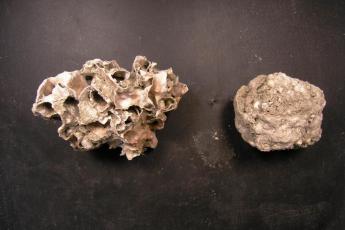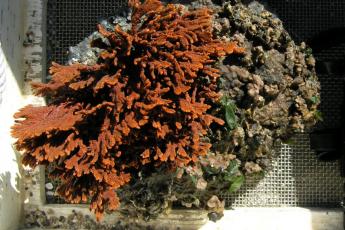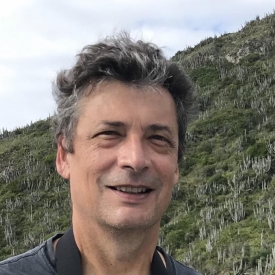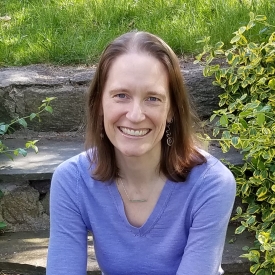Imagine being able to change your body form so that you could live comfortably in more than one type of habitat. Well an introduced marine organism in San Francisco Bay can do just that! This species is a type of calcified encrusting bryozoan called only by its scientific name, Schizoporella errata. Normally this species grows on hard surfaces like pilings, boat hulls, and docks. It looks like a hard crust and takes on the shape of whatever it grows on. Occasionally, in areas that are calm and protected from heavy waves, it grows into a small reef that attaches to a hard substrate.S. errata is native to the Mediterranean and part of a group of bryozoans that are very difficult to accurately identify. In 1979 this species was reported in San Francisco Bay in its normal encrusting form. But in 2005 scientists noticed a new growth form that was not attached to any substrate. They discovered that this species was growing in free-living balls called bryoliths. In this form, S. errata was able to grow on the surface of the mudflats common in the southern portion of San Francisco Bay. Although similar species are known to form bryoliths, this unique form of S. errata has not been discovered anywhere else in the world. This modification has opened up a whole new habitat for this species that was previously unavailable.


S. errata not only increased its own range, but also the range of many other species. Dr. Chela Zabin from the Smithsonian Environmental Research Center (SERC) and others recently discovered that the bryolith form of S. errata opened up the mudflats to other species that need a hard substrate or reef environment to survive. They found more than 50 species living on the S. errata bryolith balls. They identified 34 of these species and determined whether or not they were native to San Francisco Bay. Of the identified species, 74% were introduced. Many of these were species that only live on hard substrates, like the habitat the S. errata created.
Amazingly, this species is able to grow in a new way that allows it to live in a new environment that is completely different from its native environment. In making this transition from hard surface to the mudflat S. errata not only increased its own range, but also the range of many other species that couldn’t exist on the mudflat without the hard substrate it provides. This shows that we can’t predict what an introduced species will do or what impact it will have in a new environment. The next step will be to determine the potential impact that the bryoliths could have on the bay ecosystem and to map the density of this growth form on the mudflat.
Zabin CJ, R Obernolte, JA Mackie, J Gentry, L Harris, and J Geller. 2010. A non-native bryozoan creates novel substrate on the mudflats in San Francisco Bay. Mar. Ecol. Prog. Ser. 412:129-139



